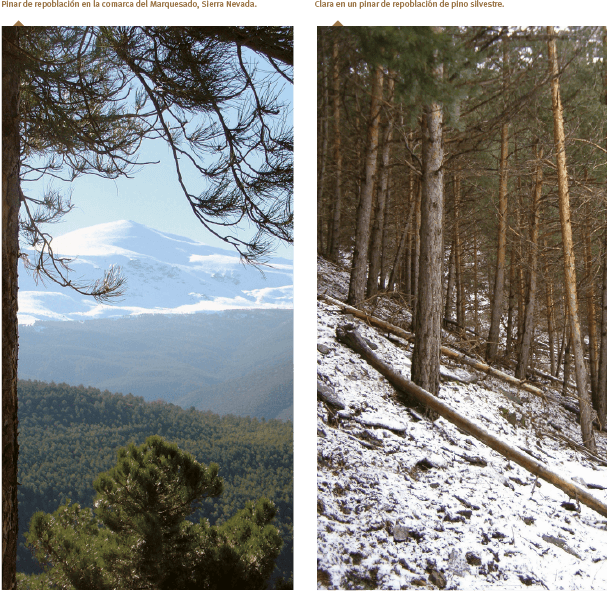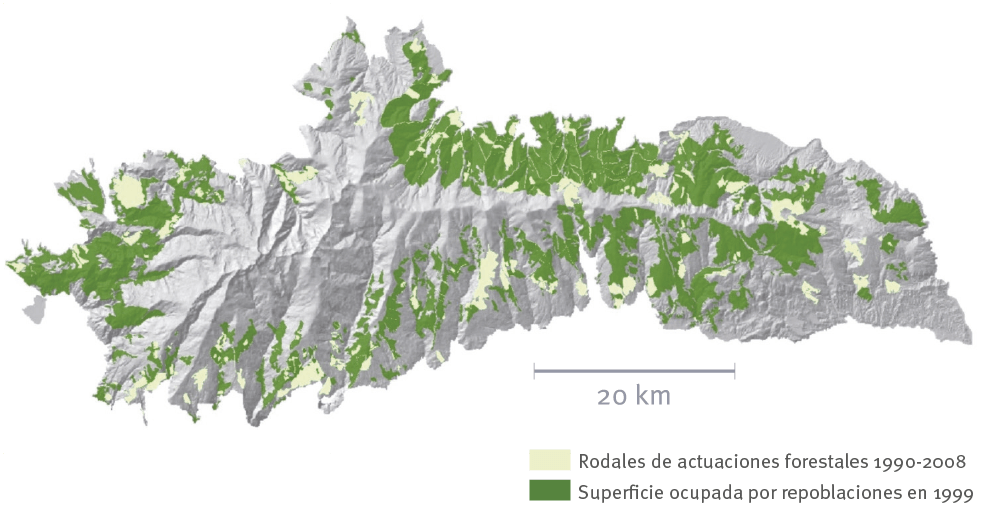Aims
The main aim is to review some of the most representative forest-management actions conducted in Sierra Nevada in the last decade, seeding to identify the effects of these actions on the state of the ecosystems before and after the works were executed.

Method and effort
Methodology steps:
- Compiling and locating the area of all the actions to be undertaken on the forest stands of the Sierra Nevada National and Natural Parks from 1999. All these actions are digitalized and included in a geographic database.
- Compiling of information that enables the description of the state of the forest stands at different points in time during the study.
- Selection of pilot areas for the retrospective analysis of the time course of the stand monitored under the management applied. In these, a complete forest inventory (dasometric, epidometric and floristic) is made to evaluate the development of the stand over the time period monitored. A study is made not only of structure but also function.

Periodicity
Both the compiling of the information as well as the data gathering in the field are undertaken only once per area.
References
Arias Abellán, J. 1981. La repoblación forestal en la vertiente norte de Sierra Nevada. Cuadernos Geográficos de la Universidad de Granada, 11: 283-306.
Bonet García, F. J., Villegas Sánchez, I., Navarro, J. y Zamora Rodríguez, R. 2009. Breve historia de la gestión de los pinares de repoblación en Sierra Nevada. Una aproximación desde la ecología de la regeneración. En: S.E.C.F.-Junta de Castilla-León (eds.), Actas 5º Congreso Forestal Español. CD-Rom. Sociedad Española de Ciencias Forestales. Ávila.
Cano, L., Castillo A., De La Hoz, F. y Cabrera M. 1998. Ordenación de nueve montes de la zona del Marquesado en el Parque Natural de Sierra Nevada, Granada. Cuad. Soc. Esp. Cienc. For., 6: 215-236.